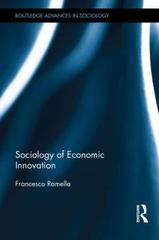Question
Consider the population model2. PNG where GPA is college GPA (in a semester), X is a vector of exogenous explanatory variables, SAT is SAT score,
Consider the population model2. PNG
where GPA is college GPA (in a semester), X is a vector of exogenous explanatory variables, SAT is SAT score, S is total hours spent studying during the semester, and e is an error term. You have access to a large random sample of students (indexed by i) from a single university . Assume that X and SATare exogenous. Suppose that you are interested in estimating ?.
(a) (5 pts) What does ? represent in this model?
(b) (15 pts) Evaluate estimating the above relationship using OLS. Suppose that you are primarily interested in estimating ?.
(c) (20 pts) Now, suppose that at this university , all students are are randomly assigned to dorms. Dorms are varying distances (di) from the center of campus, where all classes are held (in person only!). Explain how to use this variable to obtain a consistent estimate of ?, if it is possible. Clearly state any assumptions that you make. Be sure to justify, in detail, why your approach is valid. If this new variable is not useful, simply
state that it is not useful.
(d) (20 pts) Now, suppose that you have access to data that tracks students over time, so that GPAitrepresents the semester (not cumulative) GPA of student i in semester t, and Sitrepresents hours studied by student i in semester t. The variables Xi and SATi are constant over time. You don't have the distance variable anymore. The number of students in the data is very large, and you have 8 semesters of data for each student. Adapt the model in Equation (1) to make use of the new data. If possible, explain how to obtain a consistent estimate of ?. Clearly state any assumptions that you make. If it's not possible to get a consistent estimate of ?, simply state this.
(e) (20 pts) Suppose now that you have a new dataset from a large sample of graduates from this university: wage at age 30, total hours studied during college, cumulative college GPA at graduation, and Xiand SATias described above. In addition, you know that all graduates with a GPA > 3.7 graduate with honors. This achievement is noted prominently on their official transcript. Identify an interesting economic question that you can answer using these data, and clearly state it. Write down an empirical model and explain specifically how you would estimate it. Clearly state any assumptions that you make.





Step by Step Solution
There are 3 Steps involved in it
Step: 1

Get Instant Access to Expert-Tailored Solutions
See step-by-step solutions with expert insights and AI powered tools for academic success
Step: 2

Step: 3

Ace Your Homework with AI
Get the answers you need in no time with our AI-driven, step-by-step assistance
Get Started


